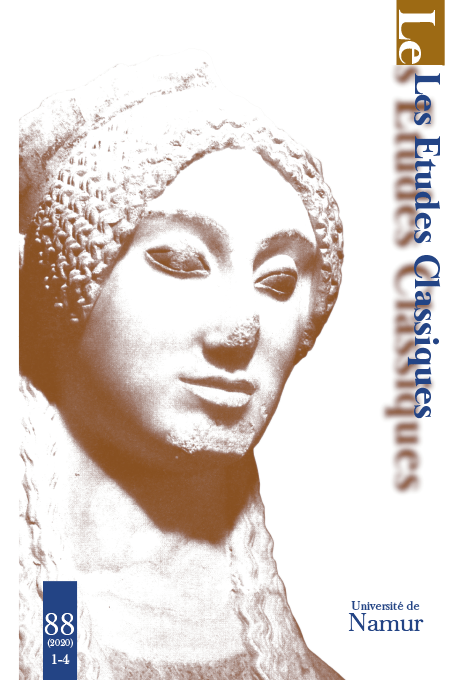 previous article in this issue previous article in this issue | next article in this issue  |

Preview first page |
Document Details : Title: La paire divine messapienne oššo et haz(z)ava Author(s): SAVIĆ, Danilo Journal: Les Études Classiques Volume: 92 Issue: 1-4 Date: 2024 Pages: 73-96 DOI: 10.2143/LEC.92.1.3293851 Abstract : Le présent article propose une nouvelle interprétation des inscriptions MLM 5 Bas et MLM 6 Mu. Carlo de Simone reconnaît dans ces textes deux anthroponymes féminins avec la finale de génitif singulier des thèmes en -ā-, oššovaš et hazava(s). À notre avis, cette lecture crée des difficultés au niveau de l’orthographe et de la morphologie messapiennes. Par ailleurs, elle n’est pas défendable au vu des datifs singulier oššo et hazava attestés dans MLM 36 Rud. Le datif oššo, ainsi que le prénom masculin vaššnihi dans MLM 2 Cae, permet d’isoler la forme oššo dans MLM 5 Bas et MLM 6 Mu et, par conséquent, de reprendre la segmentation de ces textes proposée par Ciro Santoro, mais avec une justification morphologique bien différente de la sienne. Dans tous les trois textes nous proposons d’analyser oššo et hazava comme deux théonymes au datif singulier, respectivement masculin et féminin. This article proposes a new interpretation of the inscriptions MLM 5 Bas and MLM 6 Mu. The editors of MLM identify in these texts two female -ā-stem anthroponyms in the genitive singular, oššovaš and hazava(s). In our opinion, this reading raises difficulties with regard to Messapic orthography and morphology. Furthermore, it is not tenable in view of the datives singular oššo and hazava attested in MLM 36 Rud. The dative oššo, as well as the masculine anthroponym vaššnihi in MLM 2 Cae, allow us to isolate the form oššo in MLM 5 Bas and MLM 6 Mu, and, consequently, to resume the segmentation of these texts as suggested by Ciro Santoro, although with a morphological justification very different from the one he proposed. In all three texts, we advocate an analysis of oššo and hazava as theonyms in the dative singular (masculine and feminine respectively). |
|


